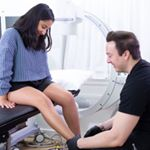Guide about the Endovenous ablation (radiofrequency and laser) for varicose veins:
Varicose veins are dilated, twisted superficial veins. When they are in the legs they can be painful, itchy or unsightly, especially when patients are standing and walking. Varicose veins are usually treated with surgery to remove the veins, by stripping them to the level of the knee, so they are called as high ligation and stripping. New less invasive treatments seal the main leaking vein in the thigh using foam sclerotherapy, laser (endovenous laser therapy) or radiofrequency ablation for Laser Ablation Recovery and RF Ablation Recovery. These techniques may result in less pain after the procedure, fewer complications, and a quicker return to work and normal activities with improved patient quality of life, as well as avoiding the need for a general anaesthetic.

The review brought together all available randomised controlled trials that compared the new techniques to surgery in the treatment of varicosities in the great saphenous vein. You will found 13 trials, with a combined total of 3081 randomised patients, which met your inclusion criteria. Three trials compared foam sclerotherapy with surgery, eight trials compared endovenous laser therapy with surgery and five compared Radiofrequency Ablation Before And After with surgery (two studies had two or more comparisons with surgery). Overall the quality of the studies was acceptable, however none of the studies tried to cover the treatment type from the participants, researchers and clinicians, or those who measured the outcomes. Most of the studies also had other biases.
For foam compared with surgery, there was no difference between the treatment groups in the rate of recurrence as measured by a clinician and the rate of recurrence that was noted by patient symptoms. The treatment group for technical failure has no basic difference. Comparing laser therapy and surgery, there was no difference between the reappearance rates it will be either clinician noted or by symptoms or for reopening of the treated vein that is Recanalisation. New vein growth (neovascularisation) and technical failure were both higher in the surgery group than in the laser group. To compare between radiofrequency ablation and surgery there were no differences between the treatment groups for recurrence, recanalisation, neovascularisation or technical failure. Outcomes that measure changes in patients' quality of life, operative complications and pain were not able to be compared directly, however quality of life generally increased similarly in all treatment groups and complications were usually low, especially major complications. Pain reporting differs greatly between the studies but in general pain it was similar between the treatment groups.
The limited evidence that supports the foam sclerotherapy, endovenous laser therapy and radiofrequency ablation are not as good as than open surgery. However, it should be noted that there were large differences between the way the studies reported their outcomes, which included definitions and collection time points. These differences limited the findings of your review. You need more data from randomised controlled trials comparing these novel therapies to surgery before you really know their true potential. Patients must Care After Radiofrequency Ablation.
Article Source : https://veintreatmentspecialist.tumblr.com/post/185264904080/guide-about-the-endovenous-ablation



